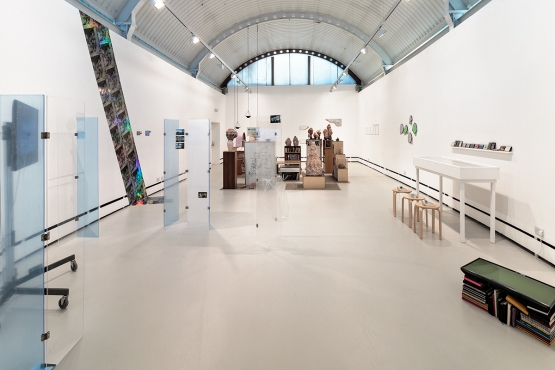As her contribution to the exhibition, Cally Spooner has devised a Study Week for eight participants selected through an Open Call. Spooner will lead an immersive experience over the four days, addressing new forms of management (of self and others), the internalisation of institutions, and the concept of the 'exhibitionary complex’. The Study Week is structured with reading groups, film screenings and group practicalities, punctuated with invited speakers and walkers. Full details here.
David Toop’s archive of nearly 200 audio tapes, dating from 1973 to 1995, forms a ‘sonic diary’ of the artist’s musical interests and relationships across a twenty-year period. The archive, shown together publicly for the first time, encompasses rare material sourced from the BBC’s vinyl archives, field recordings, interviews with fellow musicians, rehearsal tapes of Toop’s own work, and a myriad of sound and musical references. Handwritten annotations on the tape sleeves imply a hasty, sketchy gathering of material as thought process, while later recordings seem more ordered and carefully grouped; with their typed covers. Three listening stations next to the archive offer an insight into the diversity of material gathered by Toop.
